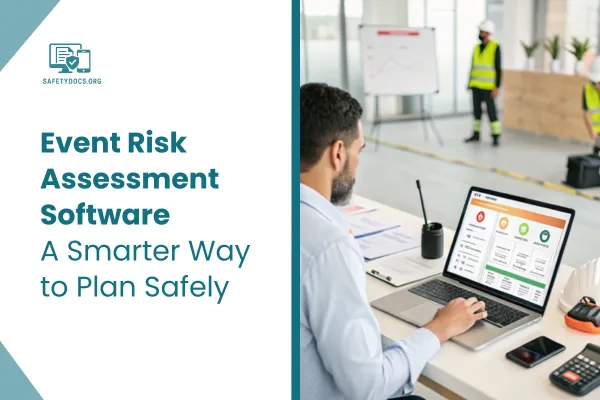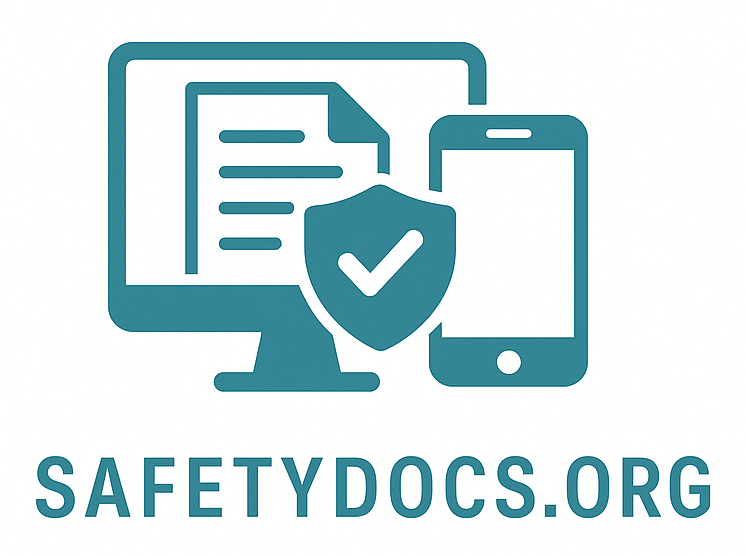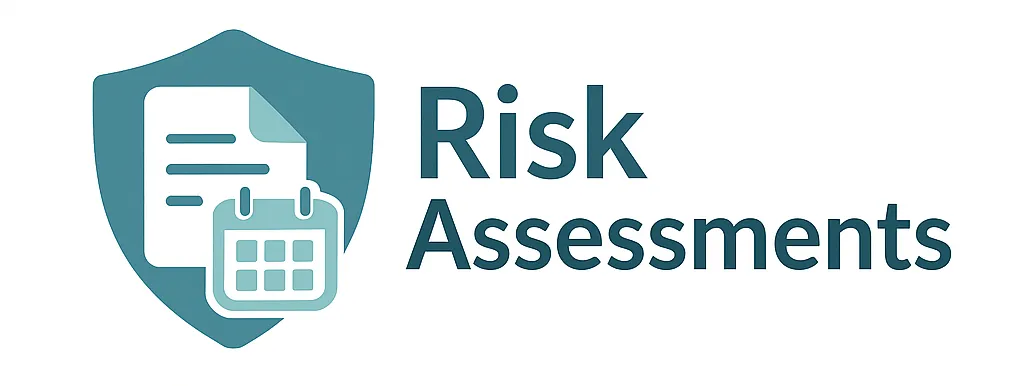
Event Risk Assessment Software That Works
Event Risk Assessment Software: A Smarter Way to Plan Safely
Planning a safe and successful event involves more than logistics, schedules, and aesthetics. One critical part of event planning that often gets overlooked is safety preparation. Event risk assessment software is now one of the most valuable tools for anyone organizing gatherings of any size. Whether it's a corporate conference, a community event, a wedding, or a festival, the risk of something going wrong is real. This tool helps planners prepare for risks, meet safety requirements, and stay in control when things change unexpectedly.
Every event carries potential threats—bad weather, overcrowding, equipment failure, medical incidents, or unexpected emergencies. Managing these risks manually, using spreadsheets or paper-based methods, often leads to missed details or slow response times. Software built specifically for event risk planning solves these problems by offering structure, clarity, and quick access to important information. It helps event organizers plan smarter, not harder.
Why Risk Management Is a Must for Every Event
Risk isn't just a concern for massive events. Even a small indoor meeting can face hazards like fire alarms, power outages, or medical emergencies. Legal expectations are increasing, and insurance providers often require proof of risk assessments before offering coverage.
Using event risk assessment software ensures every threat is identified, assessed, and documented. It creates an organized record that protects the organizer and shows a commitment to attendee safety. These records are often requested by local authorities or licensing boards when granting event permits. In many cases, having a digital system in place can speed up the approval process.
More importantly, effective risk management protects human lives. Attendees expect that someone has planned for emergencies. Software gives organizers a way to make that expectation a reality, without getting overwhelmed by paper trails or fragmented communication.
Key Features That Make the Difference
1. Hazard Identification Tools
Risk assessment begins by listing potential threats. The best platforms come with built-in libraries of common risks—everything from weather disruptions to food poisoning or trip hazards. Planners can select and modify these based on their event type.
Each risk is rated by likelihood and severity, making it easier to prioritize actions. Some platforms even suggest responses or mitigation strategies based on the risk level.
2. Live Data and Alert Integration
Many systems connect with weather services or local emergency alerts. This means planners can be warned about storms, extreme heat, or civil disturbances in real time. These alerts are sent directly to mobile devices or email, so changes can be made quickly.
Live data also supports on-site monitoring during the event. If something happens, the plan can be adjusted immediately, with all team members receiving updates.
3. Team Communication and Role Assignment
Risk assessment isn’t a one-person job. The software allows users to assign specific responsibilities to each team member—like checking fire exits, managing security gates, or monitoring medical zones.
When roles are clearly defined and tracked, everyone knows what to do and when to do it. This reduces confusion and saves time when action is needed quickly.
4. Risk Scoring and Visual Dashboards
One of the biggest challenges in risk planning is knowing which issue to tackle first. Software helps solve this by using formulas to calculate risk scores. These scores are based on how likely a problem is and how serious it could be if it happened.
The dashboard shows all identified risks, color-coded by urgency, making it easy to scan and act. This feature helps teams stay organized and avoid missed steps.
5. Mobile-Friendly Interfaces
On the day of the event, mobility matters. Team members are rarely sitting at desks. They’re on the move, checking equipment, guiding guests, and responding to issues.
Mobile access means risk assessments, emergency plans, and team checklists can be viewed and updated on a phone or tablet. This real-time access improves communication and ensures tasks get completed on time.
The Real-World Payoff: Safer, Smoother Events
Case Study: Outdoor Music Festival
At a three-day outdoor music festival, organizers used event risk assessment software to manage a site with multiple stages, food vendors, and camping areas. One day before opening, weather data integrated into the system flagged strong wind warnings. The software automatically updated the risk level for temporary stage structures.
The setup team reviewed the changes and decided to reinforce the structures and adjust the schedule. Because the decision was logged in the system and shared with all staff, the change was handled quickly and safely.
Case Study: Corporate Training Event
A training seminar at a large venue had to comply with strict safety regulations due to international guests. The organizing team used software to track hazards, manage attendee movement, and document fire safety measures. When a last-minute change in room layout was made, the system updated evacuation plans in minutes. Because the venue inspector could access this data easily, they approved the event without delay.
Meeting Legal and Insurance Expectations
Authorities often require a full risk assessment before issuing event permits, especially for large or public gatherings. Insurance companies may also deny claims if risk assessments are not properly documented.
Event risk assessment software creates time-stamped records of every decision, update, and safety measure taken. This not only protects the event organizer legally but also helps during any post-event investigation or claim process.
Digital documentation also makes audits smoother. Instead of scrambling to find handwritten notes or misplaced emails, everything is centralized in one platform.
Event Types That Benefit the Most
While all events carry risk, some are more complex than others. The following types benefit the most from using event risk assessment software:
Outdoor Festivals: Due to weather exposure and crowd size.
Sporting Events: High energy, large audiences, and physical risk to participants.
Corporate Conferences: Involves tight schedules, media equipment, and often high-profile guests.
Weddings and Private Celebrations: Even personal events can face serious issues without safety plans.
Exhibitions and Trade Shows: Electrical setups, heavy equipment, and crowd movement create multiple hazard points.
Time and Cost Savings You Can Measure
Event organizers often juggle multiple responsibilities. Risk assessments take time—and the longer it takes, the more expensive the process becomes. Using software helps reduce that cost by speeding up common tasks:
Automatic report generation
Templates for standard risk items
Drag-and-drop event layouts for site mapping
Quick email alerts for overdue tasks
More importantly, preventing a serious incident can save tens of thousands in legal fees, injury claims, or bad press. In many cases, the cost of the software pays for itself with just one avoided emergency.
Tips for Getting Started
If you’re new to this kind of tool, here are some tips to get started:
1. Start Early – Use the software during the early planning phase, not the week of the event.
2. Involve the Right People – Include your security team, medics, logistics, and venue staff from day one.
3. Use Past Events – If the software allows, upload data from previous events to improve future risk assessments.
4. Test Before the Event – Run simulations or dry runs using the platform to check team readiness.
5. Review After the Event – Use the post-event data to improve your safety plan for next time.
How to Choose the Right Software
Not all platforms are the same. Here are some things to look for:
Ease of Use: Choose software with a clean interface and simple navigation.
Support and Training: Make sure the provider offers good customer support.
Compatibility: It should work with your calendar, ticketing system, and communication apps.
Custom Risk Templates: These save time and allow flexibility.
Real-Time Collaboration: Helps remote teams or large crews stay connected.
Consider starting with a free trial to evaluate how well it fits your team’s workflow.
Common Mistakes in Event Risk Planning
Even experienced planners sometimes overlook key areas of risk management. One common mistake is assuming a venue’s safety procedures are enough. While venues often have basic measures in place, they rarely account for the specific setup of your event. Failing to assess your own layout, crowd size, and activities leaves major gaps.
Another frequent issue is incomplete communication. If your risk plan sits in a folder or spreadsheet that only one person sees, it won’t help when action is needed. That’s why using software that allows shared access is essential—it ensures everyone on the team stays informed and can act fast.
Lastly, ignoring low-probability risks can backfire. Just because something is unlikely doesn’t mean it won’t happen. Proper planning means reviewing all risk levels, not just the obvious ones.
The Role of Feedback in Improving Future Events
Great risk management doesn’t end when the event is over. Collecting feedback from your team, vendors, and even attendees is key to improving your next event. With event risk assessment software, it’s easy to log incidents, review what went well, and highlight what needs improvement.
Some tools include built-in post-event reporting. These reports show what risks were flagged, how they were handled, and how long it took to respond. This data becomes a valuable resource for your next event, helping reduce repeated errors and improve response times.
Over time, using feedback and reports helps your team become more confident and efficient, turning risk planning into a natural part of the workflow rather than a burden.
FAQs
1. What is the purpose of risk assessment for events?
It helps identify potential issues before they occur and prepares your team to respond quickly and effectively.
2. Can small events benefit from using risk planning tools?
Yes, even small gatherings can face unexpected problems, and software simplifies managing those risks efficiently.
3. How does risk software help during emergencies?
It centralizes all action plans, allowing for faster communication and better coordination among team members.
4. Is it difficult to train staff on event safety tools?
Most platforms are user-friendly and offer quick onboarding, so your team can start using them right away.
5. Are spreadsheets a good alternative to risk software?
Spreadsheets lack real-time updates and collaboration features, making them less reliable for dynamic event planning.
Conclusion
Preparing for risks is no longer optional—it’s a critical part of event planning. With tools like event risk assessment software, you can protect your guests, meet legal standards, and stay focused on delivering a memorable experience. Instead of reacting to problems, you can plan ahead with confidence and clarity.
If safety, efficiency, and peace of mind matter to you, then it’s time to make this software a core part of your event planning process.

